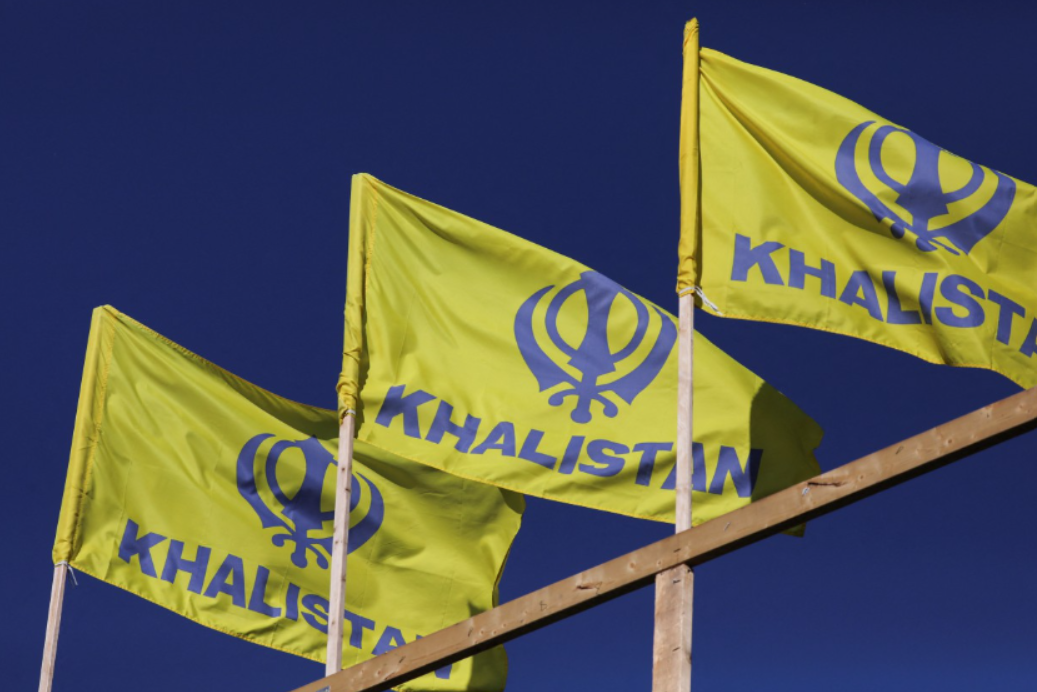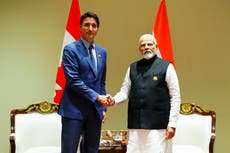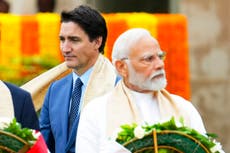What is Khalistan movement - the Sikh separatist demand at the center of the tensions between India and Canada
Tensions between Canada and India have reached new heights with dueling diplomatic expulsions and an allegation of Indian government involvement in the killing of a Sikh separatist leader on Canadian soil

Tensions between Canada and India have reached new heights with dueling diplomatic expulsions and an allegation of Indian government involvement in the killing of a Sikh activist on Canadian soil.
The row centers around the Sikh independence, or Khalistan, movement. India has repeatedly accused Canada of supporting the movement, which is banned in India but has support among the Sikh diaspora.
On Monday, Canadian Prime Minister Justin Trudeau in Parliament described what he called credible allegations that India was connected to the assassination of Hardeep Singh Nijjar in June. The Indian government denied any hand in Nijjar’s killing while also saying Canada was trying to shift the focus from Khalistan activists there.
Here are some details about the issue:
What is the Khalistan movement?
The Sikh independence movement began as an armed insurgency in the late 1980s among Sikhs demanding a separate homeland. It was centered in northern Punjab state, where Sikhs are the majority, though they make up about 1.7% of India’s total population.
The insurgency lasted more than a decade and was suppressed by an Indian government crackdown in which thousands of people were killed, including prominent Sikh leaders.
Hundreds of Sikh youths also were killed in police operations, many of which were later proven in courts to have been staged, according to rights groups.
In 1984, Indian forces stormed the Golden Temple, Sikhism's holiest shrine, in Amritsar to flush out separatists who had taken refuge there. The operation killed around 400 people, according to official figures, but Sikh groups say thousands were killed.
The dead included Sikh militant leader Jarnail Singh Bhindranwale, whom the Indian government accused of leading the armed insurgency.
On Oct. 31, 1984, Prime Minister Indira Gandhi, who ordered the raid on the temple, was assassinated by two of her bodyguards, who were Sikh.
Her death triggered a series of anti-Sikh riots, in which Hindu mobs went from house to house across northern India, particularly New Delhi, pulling Sikhs from their homes, hacking many to death and burning others alive.
Is the movement still active?
There is no active insurgency in Punjab today, but the Khalistan movement still has some supporters in the state, as well as in the sizable Sikh diaspora beyond India. The Indian government has warned repeatedly over the years that Sikh separatists were trying to make a comeback.
Prime Minister Narendra Modi’s government has also intensified the pursuit of Sikh separatists and arrested dozens of leaders from various outfits that are linked to the movement.
When farmers camped out on the edges of New Delhi to protest controversial agriculture laws in 2020, Modi’s government initially tried to discredit Sikh participants by calling them “Khalistanis.” Under pressure, Modi government later withdrew the laws.
Earlier this year, Indian police arrested a separatist leader who had revived calls for Khalistan and stirred fears of violence in Punjab. Amritpal Singh, a 30-year-old preacher, had captured national attention through his fiery speeches. He said he drew inspiration from Bhindranwale.
How strong is the movement outside India?
India has been asking countries like Canada, Australia and the U.K. to take legal action against Sikh activists, and Modi has personally raised the issue with the nations' prime ministers. India has particularly raised these concerns with Canada, where Sikhs make up nearly 2% of the country's population.
Earlier this year, Sikh protesters pulled down the Indian flag at the country’s high commission in London and smashed the building’s window in a show of anger against the move to arrest Amritpal Singh. Protesters also smashed windows at the Indian consulate In San Francisco and skirmished with embassy workers.
India’s foreign ministry denounced the incidents and summoned the U.K.’s deputy high commissioner in New Delhi to protest what it called the breach of security at the embassy in London.
The Indian government also accused Khalistan supporters in Canada of vandalizing Hindu temples with “anti-India” graffiti and of attacking the offices of the Indian High Commission in Ottawa during a protest in March.
Last year, Paramjit Singh Panjwar, a Sikh militant leader and head of the Khalistan Commando Force, was shot dead in Pakistan.



Bookmark popover
Removed from bookmarks